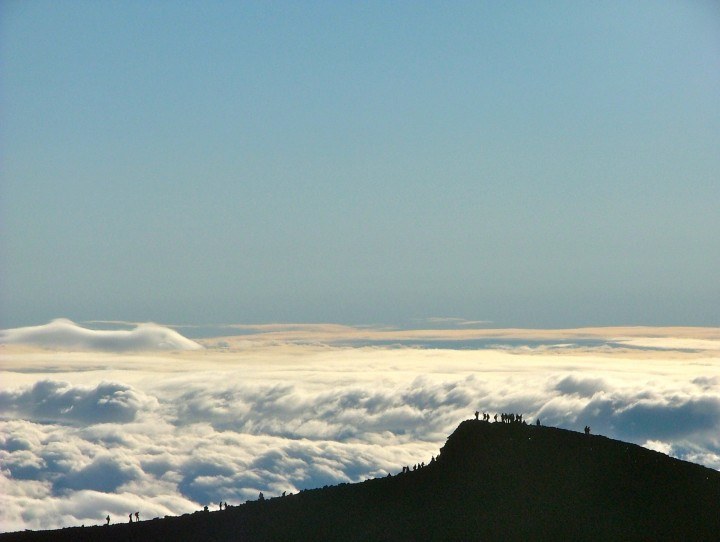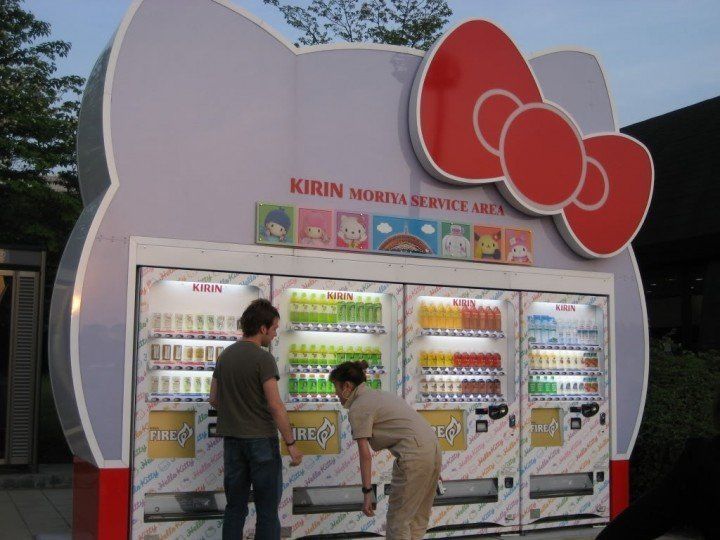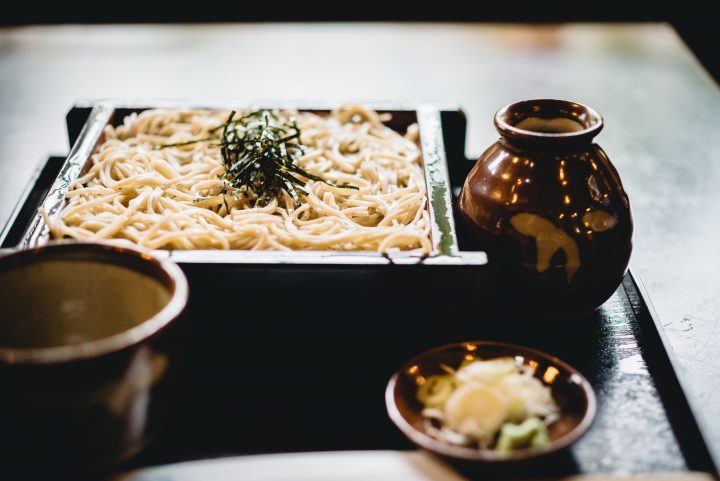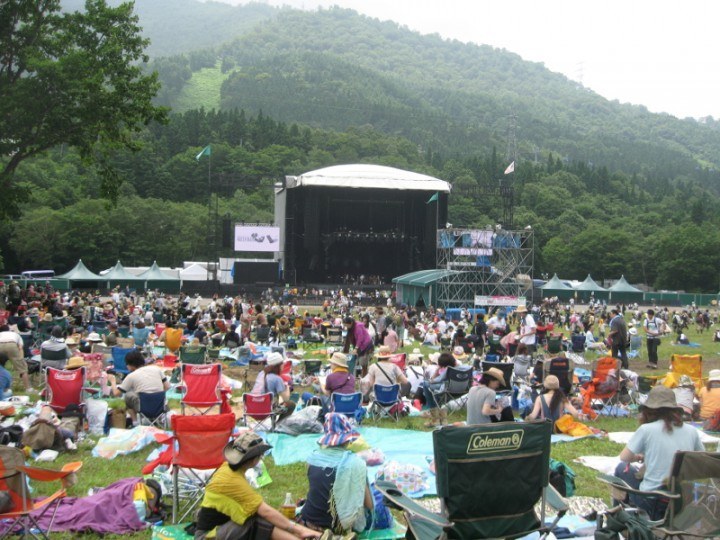Like this post? Help us by sharing it!

When it comes to visiting Japan, people often think about planning trips in spring and autumn – beguiled by cherry blossom or bright autumn leaves. Winter gets its fair share of attention, too, with snow festivals and cosy Christmas activities drawing the seasonal crowds. Japan in summer, though, tends to get overlooked. But from early June through to late August, you’ll find a totally different side to the country on show, lots of which might surprise you. We think Japan in summer is an amazing time to travel. Here’s why.
10 reasons to visit Japan in the summer
1. Hiking
Though the heat may be on in Japan’s sea-level cities, up in the mountains the temperature remains cool and manageable – perfect for a bit of hiking. Some of Japan’s most stunning geography is to be found in high-altitude spots like the Japan Alps, Kamikochi, and the mountains of the Kii Peninsula. And in summer, everything is at its lushest and most beautiful.

2. Beaches
When you think of Japan, the likelihood is that golden beaches, glittering waves and sunbathing do not immediately spring to mind – but with nearly 30,000 km of coastline, it stands to reason that Japan should have a few great beaches.
Some of the very best Japanese beaches are to be found in the subtropical islands of Okinawa (a short and easy domestic flight from the mainland). If you don’t have the time to make it that far, there are great beaches up and down the length of Japan.

3. Spectacular views of Mount Fuji
Mount Fuji – the 3,776m dormant volcano which is listed as a UNESCO World Heritage Site – is a familiar emblem of all things Japan. And, during the summer months, the views of its snowy peak mapped against a bright blue sky are absolutely spectacular. The climbing season begins at the beginning of July and ends in early September – and though the ascent is tough, you’ll routinely spot children and senior citizens tackling it without a hitch. Climbing Fuji can be very, very crowded, so we’d recommend admiring it from a distance, rather than tackling it yourself.

4. Scuba diving
Unbeknownst to most, Japan is home to some world-class scuba diving. Again, some of the best spots are to be found in the Okinawan archipelago, where the visibility is spectacular. Here, divers have the opportunity to swim with manta rays, hammerhead sharks and sea turtles amongst beautiful coral reefs. One of the most impressive and perplexing dive sites of all is off the coast of Yonaguni, where strange underwater rock formations have given rise to the theory that these are the ruins of some ancient, unknown Atlantis. The jury’s still out, but the columns, stairs, passageways and plazas of this “underwater city” make an incredible dive!
If you want to fit in a bit of diving but are not planning to visit Okinawa, we also recommend Yakushima, the Izu Peninsula (close to Tokyo), or the remote Ogasawara Islands.

5. Fireworks
For the Japanese, summer is a time for fireworks – and there are many fantastic displays up and down the length of the country. You might think you’ve seen pretty good firework displays at home, but Japanese displays are in a league of their own. The organisers get competitive, which means you’ll spot kanji and characters from Japanese animation up in the sky, among the different colours and patterns.
One of the most famous displays is the Sumida River Firework Display in Tokyo, which happens on the last Saturday of July. In August, Miyajima Island also has a great display, illuminating its famous torii gate – while Toya Onsen in Hokkaido holds a lakeshore firework display every single night throughout the season.
These are just a few examples. Wherever you happen to travel in Japan, you’re sure to find a firework display happening near you.

Top tips for visiting Miyajima Fireworks Festival
6. Festivals
With about many, many festivals happening every year, every day is festival day in Japan – but some of the biggest and best happen in summer. They’re rich and vibrant occasions, where girls put on their best yukata (a light kimono) and men often wear traditional dress, too.
In the northern Tohoku region, the Aomori Nebuta Matsuri sees giant, light-up floats travel through the city of Aomori. Akita holds the Kanto Matsuri, during which performers balance giant poles festooned with paper lanterns on parts of their bodies. And Sendai celebrates the Tanabata Matsuri, where festivities include traditional decorations, dances and entertainments.
Further south, Kyoto’s famous Gion Matsuri continues for the entire month of July, including a massive parade and plenty of festivities. And Tokushima on Shikoku Island celebrates the Awa Odori Matsuri – the largest dance festival in Japan.
These really are just the tip of the iceberg. There’s also the countrywide Obon festival, Kyoto’s spectacular Daimonji fire festival, Yamagata’s Toro lantern festival… the list goes on and on.

6 of the best summer festivals in Japan
7. Amazing vending machines
You might think that vending machines are no big deal, but when you visit Japan, you’ll change your mind: because these are far from your average automated drink dispensers.
Japan has vending machines in spades – more per capita than any other country in the world. They’re no less incredible in any other season, but in summer, they’re worth their weight in gold – packed full of all kinds of weird and wonderful drinks and snacks to keep you cool and entertained in the heat.
Whether you want beer, wine, iced coffee, jasmine tea, grape-flavoured fizzy jelly, sweetcorn soup or pancake-flavoured milkshake, Japanese vending machines can provide. And in some, you’ll even find ice-cream.

8. Summer foods and insane ice creams
Japanese food is delicious every day of the year, but summer brings some excellent speciality dishes that merit a mention. You’ll find festival stalls selling street-side dishes from okinomiyaki pancakes and chocolate bananas to fried noodles and corn on the cob. One particular summer favourite is zarusoba, which is essentially a dish of cold noodles, served on a bamboo tray, with a dipping sauce called tsuyu – delicious and exceedingly refreshing.
Japanese ice creams are also a real treat and come in all kinds of flavours – like kurogoma (black sesame), beni-imo (Okinawan sweet potato) and matcha (green tea). There’s also wasabi. Make of that what you will.

Ice-cream tour of Japan: Five top flavours
9. Music festivals
Another light that Japan likes to hide underneath its bushel (along with its beaches, scuba diving, and beautiful mountain scenery) is its music festivals. Though less well known among music aficionados in Europe or the US, Fuji Rock (which takes place at Naeba resort over the last weekend of July) is world-class, attracting line-ups packed with international household names as well as Japanese acts that are little known outside of Japan. Previous events have hosted the Foo Fighters, Muse, The Cure, Radiohead, Elvis Costello, Arctic Monkeys, Oasis, and many more.
If you can’t make it to Fuji Rock, Summer Sonic is another excellent Japanese music festival, taking place simultaneously in Osaka and Chiba (near Tokyo) in August.

10. Beer gardens and nomihodai
Last, but certainly not least, are beer gardens: Japan’s summer entertainment staple. Sapporo is home to the king of beer gardens for a month in July, when the whole of Odori Koen Park is transformed into a giant beer garden – but rooftop bars and beer gardens are a firm fixture of the summer scene across Japan. So much so, that each of Japan’s major brewers has a square where they set up a bar and outdoor seating for visitors to enjoy from early afternoon into the evening.
Considering Japan in summer? Get in touch with our team to start planning your trip to Japan.


